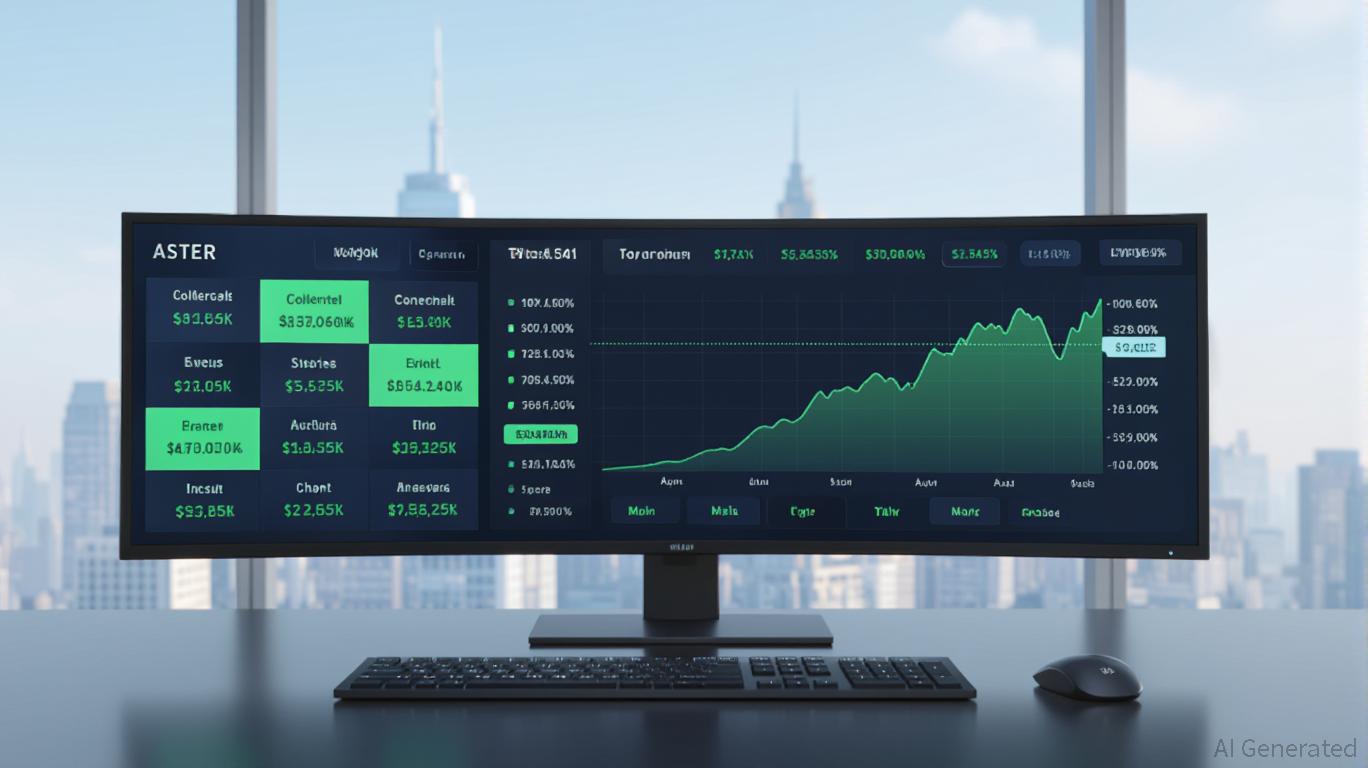Aster DEX's Latest Strategic Move and Its Influence on DeFi Liquidity
- Aster DEX's 2025 governance changes redefined ASTER as a functional trading collateral and fee discount asset, boosting liquidity provider (LP) engagement. - The 80% margin ratio and 5% fee discount incentivized LPs to reallocate capital, adjust staking behaviors, and adopt novel yield strategies like "Trade & Earn." - ASTER's price surged 860% post-TGE, TVL grew from $172M to $2.18B, and Coinbase's roadmap inclusion signaled institutional validation of the platform's privacy-focused DeFi model. - Upcomi
Governance Changes: ASTER as Collateral and Fee Discounts
Aster DEX’s announcement on November 5, 2025, represented a significant turning point. Token holders are now able to use ASTER as collateral to open leveraged trades, with the 80% margin ratio meaning $1,000 in ASTER unlocks $800 in trading leverage. This reduces dependence on external assets such as stablecoins or
The timing of this policy shift was deliberate. Just three days earlier, Binance founder Changpeng Zhao (CZ) made headlines by acquiring $2 million in ASTER, causing a 30% price jump and an 800% increase in trading activity, as reported by
Liquidity Provider Strategy Adaptations
Liquidity providers have quickly responded to these updates, making ASTER a central asset in their holdings. Collateral reallocation is now a prevailing trend: users are moving away from traditional collateral like
Staking patterns have also shifted. With ASTER serving both as a governance token and trading collateral, LPs are encouraged to hold it for the long term. They now stake ASTER not only for returns but also to access fee reductions and ensure liquidity in perpetual markets. This is a departure from earlier DeFi models, where tokens were often sold off for quick profits, as described by
Yield farming tactics have broadened with the rollout of the "Trade & Earn" feature, enabling users to use yield-generating assets like asBNB and USDF as margin for trading, as outlined by

Market Response and Institutional Recognition
The market has reacted positively to Aster DEX’s governance reforms. ASTER’s price climbed from $0.08 to $0.79 within two days of its token generation event (TGE) in September 2025, peaking at $2 before settling in the $1.3–1.5 range, as documented by
Coinbase’s decision to add ASTER to its November 2025 roadmap further underscores the platform’s promise, as mentioned by
Future Outlook: Aster Chain and DeFi Implications
Aster DEX’s long-term strategy looks beyond 2025. The team is building Aster Chain, a Layer-1 blockchain with a privacy-first approach, scheduled for launch in Q1 2026. It will employ zero-knowledge proofs to prevent front-running and bolster transaction confidentiality, as reported by
The wider DeFi sector is also changing. Rivals such as Hyperliquid and Lighter are competing with improved fee structures, but Aster DEX’s emphasis on practical governance and privacy sets it apart. As TVL and trading activity continue to grow, the platform’s ability to keep ASTER as a utility token will be vital for its ongoing expansion.
Conclusion
The 2025 governance reforms at Aster DEX have sparked a significant transformation in DeFi liquidity management. By making ASTER a versatile asset, the platform has motivated LPs to shift collateral, alter staking habits, and embrace new yield farming methods. With mounting institutional support, rapid TVL growth, and forthcoming privacy upgrades, Aster DEX is poised to reshape the decentralized trading landscape.
Disclaimer: The content of this article solely reflects the author's opinion and does not represent the platform in any capacity. This article is not intended to serve as a reference for making investment decisions.
You may also like
MMT Token's Token Generation Event and Its Impact on Blockchain Capital Utilization
- MMT Token's 2025 launch on Sui blockchain redefines DeFi capital efficiency through ve(3,3) tokenomics and CLMM liquidity mechanisms. - TGE allocated 204.1M tokens with vesting schedules, generating 1330% price surge on Binance via exchange listings and cross-chain integration. - Ve(3,3) model locks tokens for governance rights and fee-sharing, aligning incentives while reducing short-term selling pressure. - Protocol's $12B 30-day volume and institutional-grade roadmap contrast with traditional MFS fund

Gold’s Audit Problem Resurfaces as CZ Challenges Its Verifiability

Stablecoins Surpass Bitcoin as Go‑To Cryptocurrency for Illicit Transactions

Algorand (ALGO) To Rally Higher? This Emerging Bullish Fractal Saying Yes!
